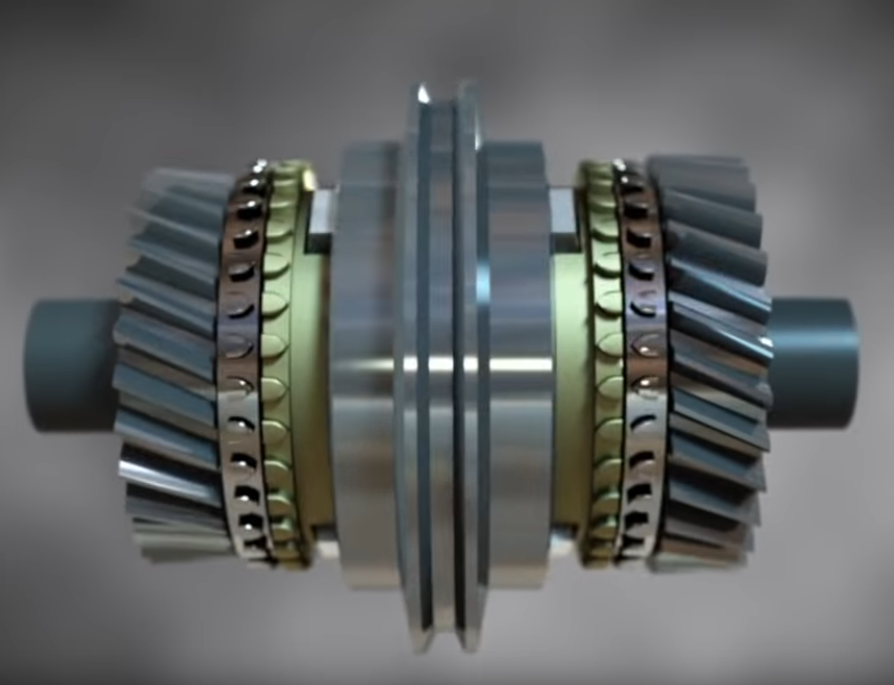As suggested by the comments, there are a couple of missing factors in this animation. The first is there is no clutch being shown. A typical transmission involves a means of disengaging the power to the transmission.
The other factor that is missing is that the parts are rotating (other than from a standing start). The parts being coupled are rotating at different speeds and only need to match up with each other. In a standing start environment, having the clutch engaged means the first set of couplings are not spinning.
As referenced, an automotive transmission also has synchronizing devices and can be described as synchromesh.
The devices internal to the transmission create rotational pressure to the gear that is about to be engaged, bringing it up to speed or slowing it to match. There is a clear and concise video online about this process.

Another site which includes also a video is even more illustrative of the process and resembles your animation. One aspect of this particular link of note is that more clearly represents the clutch-like action of the synchronizer ring.

In the case of older motor vehicles, prior to the development of synchronizing devices, an upshift was performed by shifting to neutral, removing one's foot from the accelerator pedal (slowing the engine speed) and the clutch which also slowed the input transmission shaft, allowing for a closer match to the next gear. The clutch would be again engaged with minimal clatter/damage/wear.
For downshifts, one shifted into neutral, foot off the clutch, apply pedal pressure to the accelerator to speed up the input to the transmission, then clutch again and engage the lower gear.
Many semi-trailer tractors did not have synchronizing for years after the implementation in automobiles. As a youth, I would listen for the downshifts of semi-trucks approaching stop signs and traffic lights. The gnashing of transmission teeth would tell you the driver was not yet skilled in matching input/output speeds.
For such a simple mechanism, much is accomplished for today's manual transmission operator.



